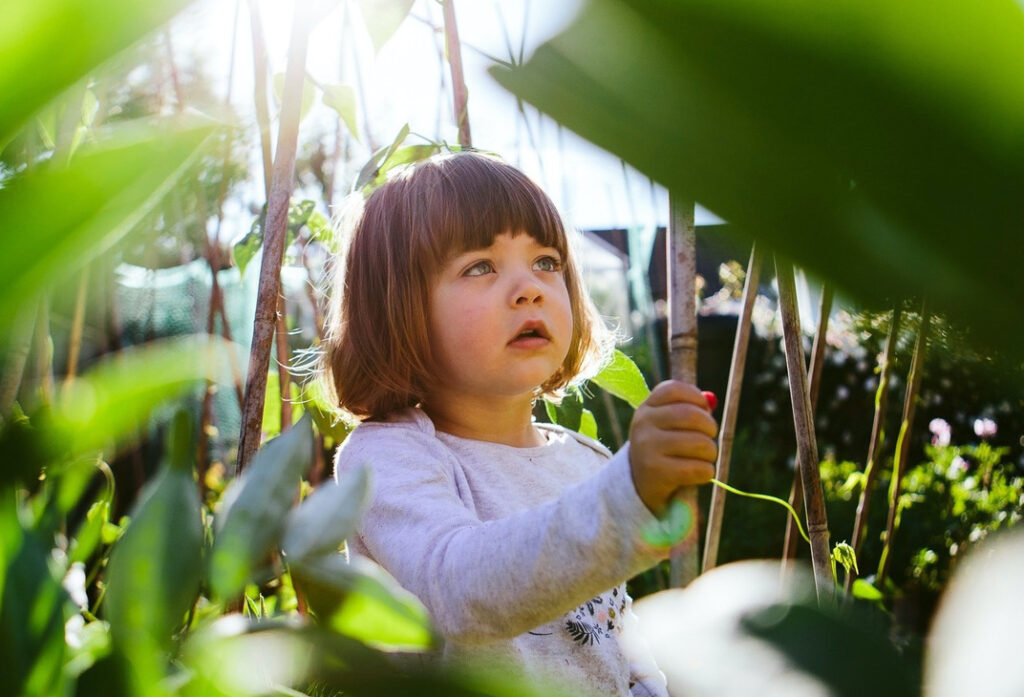
by Naturopathy student, Jemima Rose
“Food reveals our connection with the Earth. Each bite contains the life of the sun and the earth….” – Thich Naht Hanh
My eldest child, when a toddler, would go into the garden and pick what he would call ‘boregano’, (oregano to you and I), and would stuff handfuls of it straight into his mouth.
He and his sister have continued this practice of roaming the garden, especially in the summertime. The first thing they do when we return from a holiday is race around the back of the house and check what produce has bloomed and is therefore available for the picking.
I have often wondered where this love of nutritious food has come from – is it us, their parents who have had the most influence? Likely, yes, and in more ways than one.
Food Preferences Begin In the Womb
“Tests have shown that what a woman eats during her pregnancy is easily detectable in her amniotic fluid, and the foetus develops a taste for familiar flavours.” [1]
In one particular study, women were given amniotic fluid to smell, and amazingly, they could detect garlic, mint, aniseed and even carrot!
So it makes sense that if the mother consumes a diet rich in fruit and vegetables, then the child may have more tolerance for them when the time comes for solids.
There are, of course, plenty of other factors that shape the food a child will favour, such as what type of food the parents provide and keep in the home, what the parents themselves eat, the different types of emotions the child learns to associate with food, and many more aspects.

Baby Led Weaning
One such influencing factor is Baby Led Weaning (BLW). BLW is a term coined by author Dr Gill Rapley in 2003.
BLW is where you offer your baby solid finger foods. The food must be soft, chewable and in the shape of a finger, so that the baby can grab hold of it, usually with a chubby fist!
It’s based on three key things; fun, mess and exploration. It’s all about the senses. It can be introduced at around six months, as soon as the baby gains head control.

We offered cucumber, tomato, banana, toast, cut up grapes (they spend so long curiously trying to pick up grapes using their thumb and index finger, it is a delight to watch!) cooked carrot, sweet potato, omelette, boiled egg, cooked meat if you choose, cheese, the list is endless.
There is some criticism with this approach, however. According to some, babies who follow baby-led weaning are more likely to be “underweight and may be at increased risk of nutrient shortfalls such as iron deficiency because baby’s don’t typically eat iron-rich breakfast cereals or red meat until later in the weaning process.”
I can say from our experience that this was not true for our children, who utterly thrived with BLW as an addition to breast milk, and have gone on to thrive with their love and appreciation of fun and nutritious food.
Eating Together
We have always been fortunate enough to be able to eat our evening meal together, which certainly helps their relationship with food, because children learn from their parents – we all eat the same food, at the same time, and now that the children are older, much fun is had in the kitchen cooking up feasts.
They can see both my husband and I putting time and consideration into cooking. We often cook wild food and this makes eating it even more of an enriching experience.
“Evidence that parents who share meals with children and place high value on mealtimes with children provide important opportunities for promoting healthy behaviours in families.” [2]
“We know that family meals have many, many benefits for both children and adolescents. When we think about dietary intake we see higher intakes of fruits and vegetables, lower intakes of sugar sweetened beverages like sodas, less takeout, less fast food. But we also see higher well-being. We see lower rates of depression, substance abuse, and disordered eating.” [3]
Eating meals together clearly offers pluses for children, such as positively influencing food intake, promoting healthier eating habits, and contributing to better overall diets and health outcomes for children.
Shared mealtimes also provide an opportunity for family communication, bonding, and strengthening of relationships.
By regularly eating meals together, families can create a supportive and nurturing environment and enhance emotional well-being.
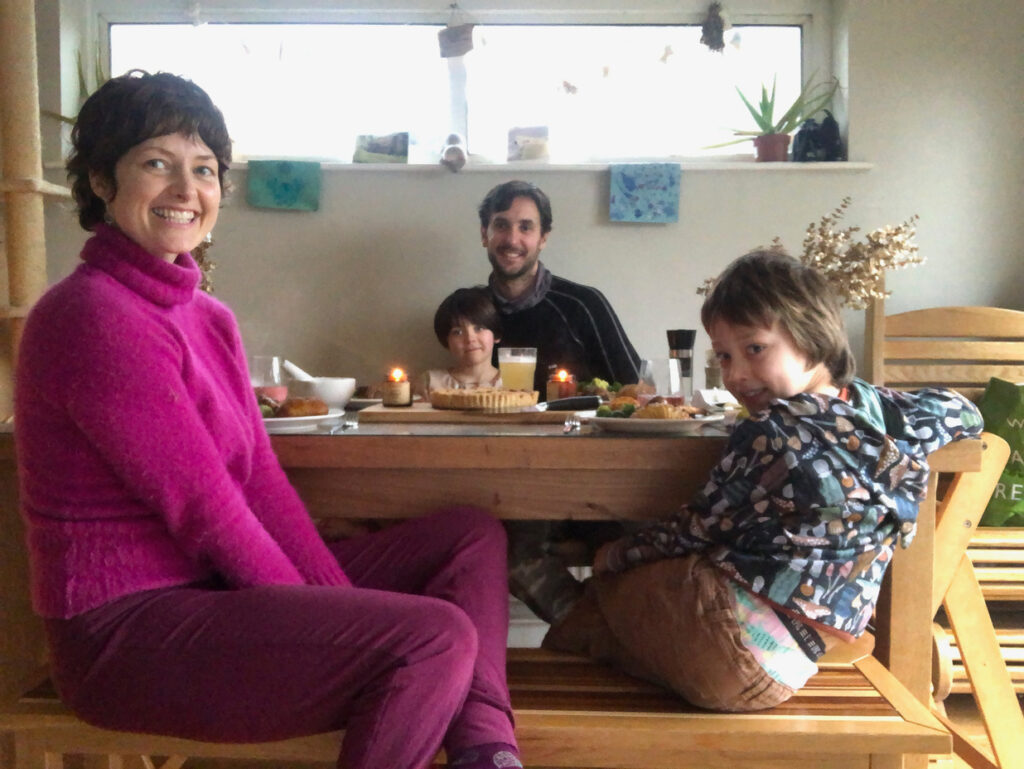
Having To Eat Everything On The Plate
“Children Who Are Less Aware Of ‘Feeling Full’ Are More Likely To Overeat” [4]
My grandmother was a stickler for leaving an empty or clean plate, and it seems my own mother inherited this trait (for a while, at least), as I remember the few times I was left sitting at the kitchen table whilst I finished something I really didn’t enjoy – luckily, it never became a problem, but after becoming a mother myself, my approach has been instinctively different.
My rationale is that food is wasted whether you leave it on your plate, or continue to eat when your body is satisfied. It is a waste to overeat, in other words.
“In a new study, from University College London, researchers found that as little as one extra spoonful of food at each meal could put your child at increased risk of obesity in later life.” [5]
As parents, we try to promote body wisdom, whereby you listen to your body’s natural cues. And so we typically adopt a child-led approach during family mealtimes, trusting in our children’s body’s to indicate when they have eaten enough, or when they are hungry and in fact, need more.
One of the benefits of Baby Led Weaning is that it teaches a child to better understand when their body is full. You are not spoon feeding them puree, they are learning to feed themselves and therefore grow the ability to regulate their own food intake.
Children will often go through developmental phases where they naturally need less food, or more food when they’re experiencing a growth spurt.
Whenever I catch myself saying, “can you just eat this, or that’”, I try to remember that as long as they are getting a good balance, then relaxing about how much they are eating helps to alleviate any stress associated with mealtimes.
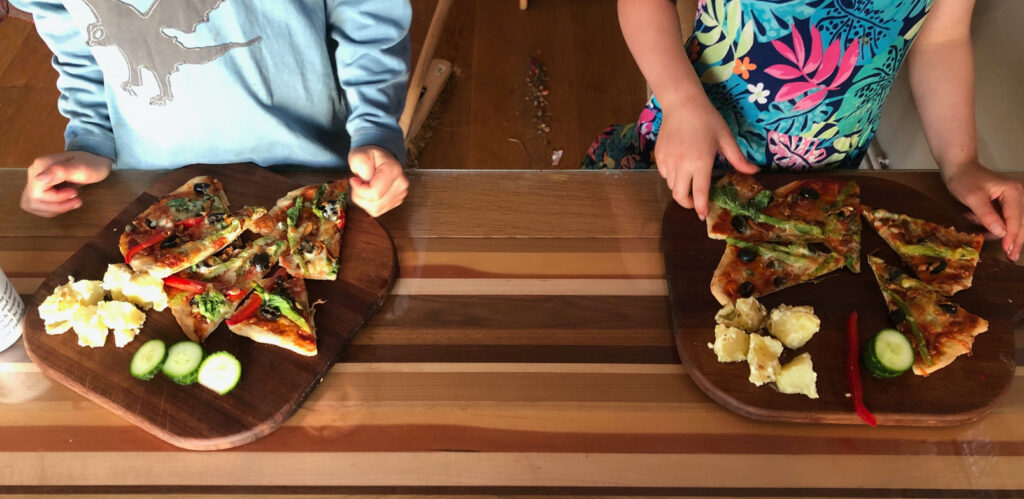
All Hands on Deck
In the kitchen, let mess be mess. Let children learn and grow a love and curiosity for food, its textures, aromas and flavours.
Teach them how to cook! Teach them how to use a knife to chop up fruit and veg. Get them involved. Let them learn from their own mistakes and feel good when they can say ‘I did that myself’!
Yes, there will be times when you need to close your eyes and unsee the explosion of flour on the floor, take a breath when the egg splats or a plate gets smashed.
Take this weekend, for example, our children cooked pancakes. We want them to leave this home equipped with the skills they need to take care of themselves, to know the nutrients they need to stay well and healthy.
Let them use utensils and get stuck in, so that they are learning, building confidence and independence. Let them choose meals to cook themselves, to follow recipes, or to make up their own, to just give it a go and to feel excited and curious about the possibilities that food provides.
Green fingers
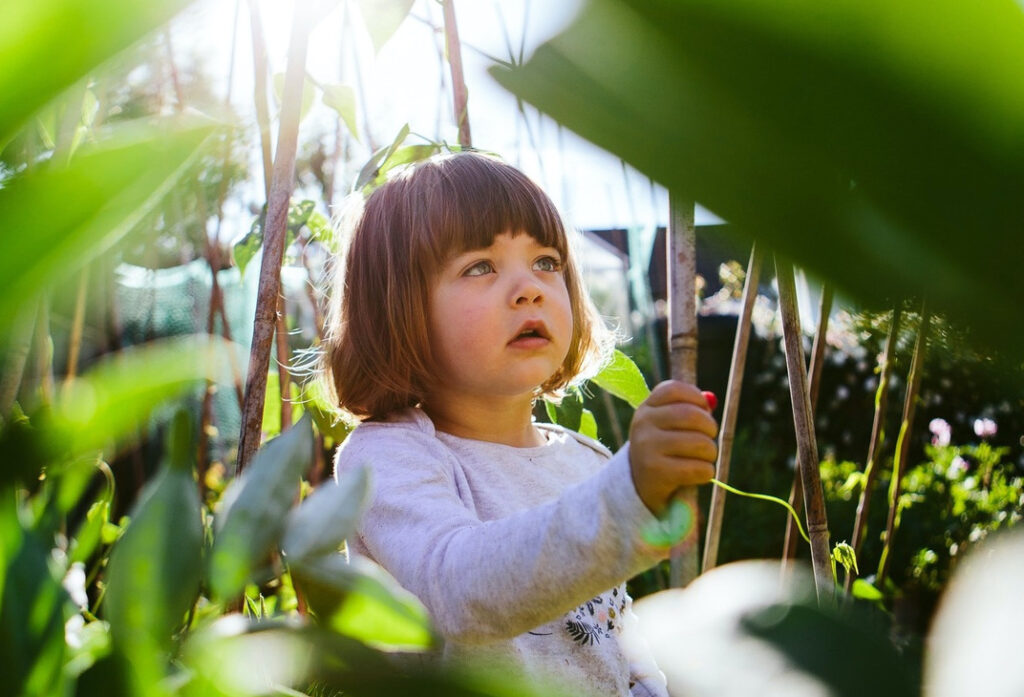
“This is really why I made my daughters learn to garden – so they would always have a mother to love them, long after I am gone.” Robin Wall Kimmerer
My daughter LOVES to garden. It is beautiful to watch. She will even give me instructions on how to carefully take out the seedling with my hands in a particular way, to then plant it in the prepared beds.
My son also loves to get stuck in, planting potatoes, peas – they enjoy the whole process, from sowing the seeds to harvesting. Although it must be said that watering our much loved plants is not something they do without being reminded.
Of course, the most rewarding part of this is the goods that bloom after all the hard work is done. The lesson of patience, for the best things come to those who wait.
First the strawberries, then the raspberries, the cucumbers, the radishes, courgettes, beans, tomatoes, salad leaves, kale, chard, fresh herbs – so much from our little lot.
The children will appear in the kitchen with green tongues, having chewed on raw chard, kale, cucumber, radishes, and all the other goodness that comes from the earth.
They often gather a salad bowl from the garden, adding in all sorts of flavours from gooseberries to fennel, but anything goes!
As long as they are having fun, and grasping where real, honest food comes from – that’s what really matters.
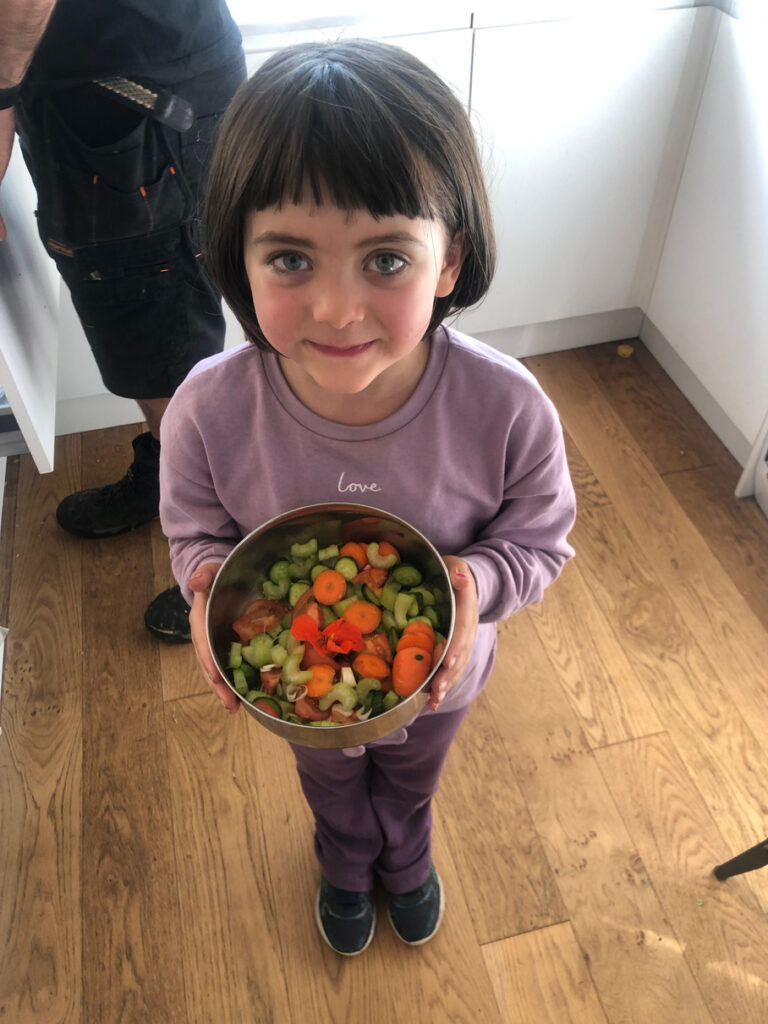
Encourage food freedom
Since real food comes in all forms there’s no need to demonise food groups. When you focus on the quality of your ingredients, you can actually be satisfied eating foods that society has deemed “unhealthy” knowing you’ve compiled a dish with well-rounded nutrition in mind.
For example: A burger and chips. Source local, free range, grass-fed beef, top it with full-fat cheese made with organic or non-processed milk, and stack high with fresh vegetables!
If you are a vegetarian or vegan family, like we are, there are so many wonderful recipes out there for home-made veggie burgers. One of our go-to’s is a chickpea burger using chickpeas, sweetcorn, cumin, paprika, gram flour and a generous handful of fresh coriander.
You can skip the bun or pick one made from sourdough or seeds and wholemeal grains. Or even make your own.
We make homemade potato chips or wedges by baking them in olive or rapeseed oil and seasoning with garlic and fresh or dried herbs from the garden like rosemary, thyme and sage.
True food freedom comes when we realise our food is not inherently good or bad. It is either high-quality and nutrient-dense, or low quality and nutrient-lacking.
For children, however, you can find positive words like ‘fun’ for sugary foods, rather than ‘bad’, and ‘nourishing’ or ‘energising’ for the ‘good’ stuff, although good stuff, in my opinion is WAY more fun, because it also makes you feel great.
Our Wild Food Adventures
Beginning in our garden and extending to the untamed hedges, fields, and forests. The love for wild food courses through our veins!
Our children have become experts in this realm, even at a young age. At four and six, they cherished the River Cottage Mushroom Handbook as their favourite bedtime read.
Their knowledge amazes their grandparents, who witness them confidently identifying various treasures like ‘fat hen,’ ‘witches butter,’ ‘jelly ear,’ ‘stitchwort’, ‘self- heal’, ‘wood sorrel’, an abundance of fungi, and countless other plants. For nearly five years, wild food has been a cherished family endeavour, and the passion continues to grow.
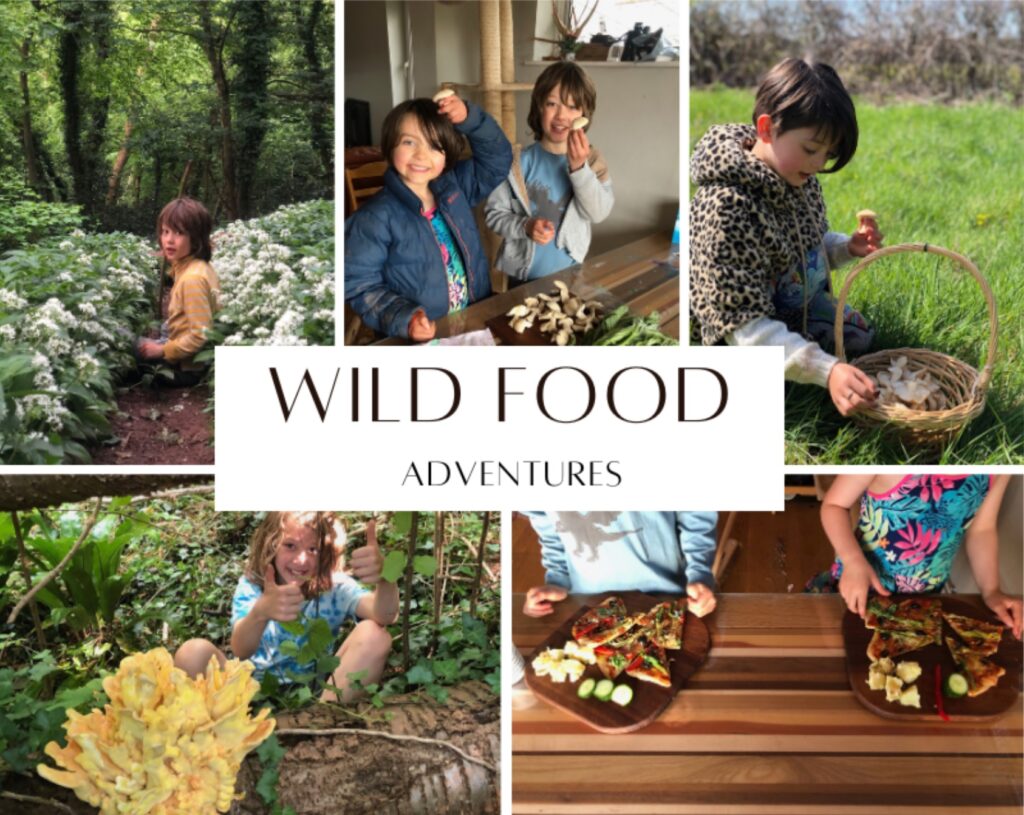
Around our home, you’ll find hanging dried herbs, jars of dehydrated mushrooms, syrups, tinctures, pickles – a testament to our culinary exploration. The process adds an extra layer of adventure and excitement – hunting for treasures, carefully collecting them, sometimes painstakingly preparing, and finally, the pure joy of consumption!
Leading by example
We are instilling our children with lifelong nourishing eating habits – embracing a diverse array of colours, textures, and flavours while fostering a positive mealtime environment. We value open communication, curiosity, adventure, and fun, making each mealtime experience meaningful.
Through the meaningful approach to mealtime, we’ve crafted a daily family blessing – a cherished time to savour sensory pleasures, share love, and communicate. It all begins in the womb, where my love for good food first took root, nurtured by my mother’s teachings.
Together with my husband, we’ve expanded upon these foundations, hoping our children will carry this tradition forward to their own families, keeping the flame of nourishing food alive for generations to come.
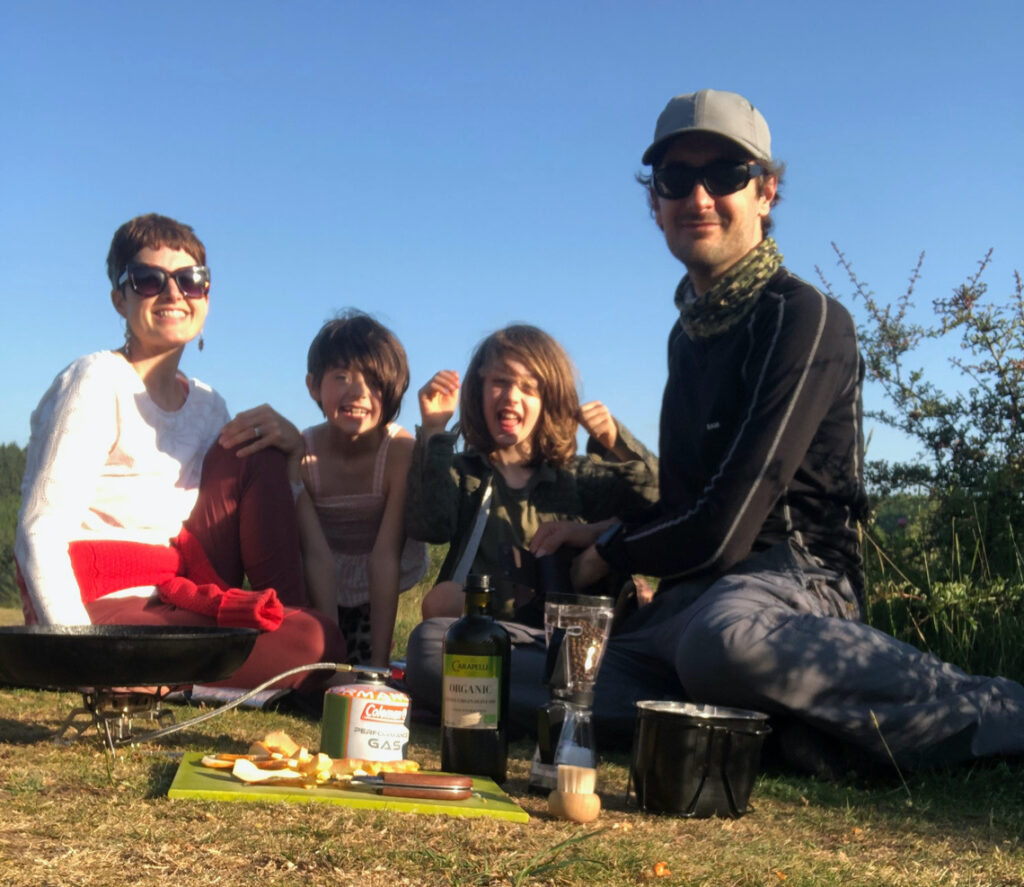
We are instilling our children with lifelong nourishing eating habits. We value open communication, curiosity, adventure, and fun, making each mealtime experience meaningful.
References
1] https://www.theguardian.com/lifeandstyle/wordofmouth/2014/apr/08/child-food-preferences-womb- pregnancy-foetus-taste-flavours
[2] https://bmcpublichealth.biomedcentral.com/articles/1 0.1186/s12889-016-3960-6
[3] https://www.hsph.harvard.edu/news/multimedia- article/family-meals-healthy-eating/
[4] https://www.bellybelly.com.au/child/should-your- child-finish-all-their-food/
[5] https://www.bellybelly.com.au/child/should-your- child-finish-all-their-food/